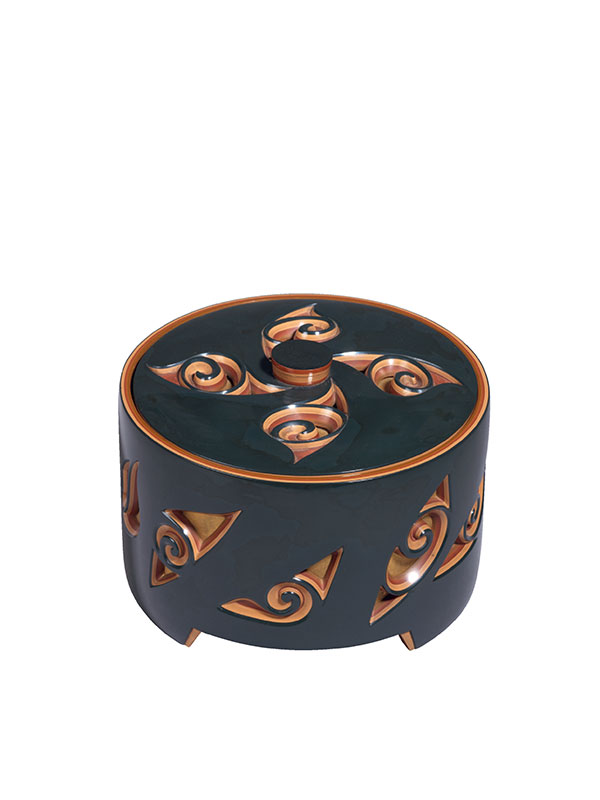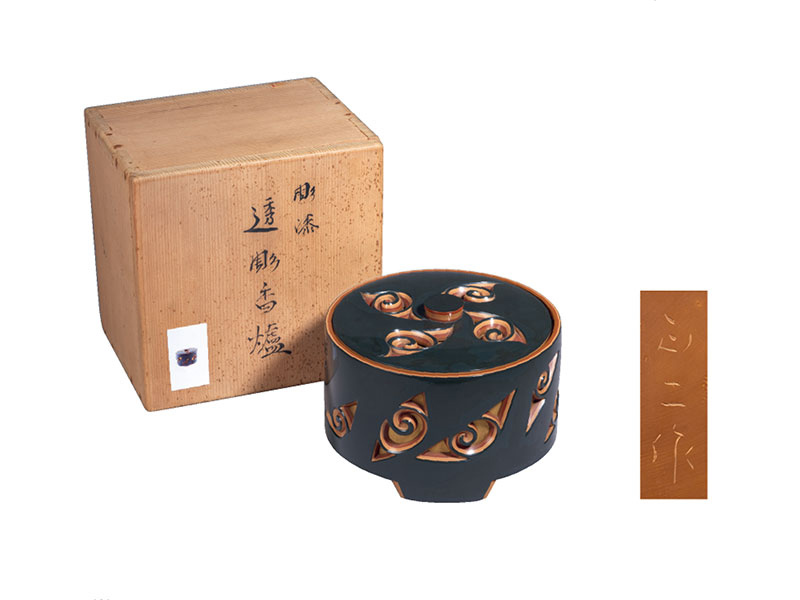Lacquer incense burner by Oguchi Masaji
Japan, Showa period, 1926 - 1989
A substantial circular lacquer incense burner, supported on three integral feet. The sides are carved in deep relief and partially openwork with a motif of spirals within shaped swirls. The motif is repeated on the lid, here with four spirals, the extremities of which and the interior have openings for the smoke of the incense to escape. The interior is lined in metal, as are the inside of the lid and the base, including the inside of the feet. The base is engraved Masaji saku (made by Masaji). The incense burner is contained within its original wooden storage box (tomobako). The outside of the lid of the tomobako is inscribed Choshitsu sukashibori koro (incense burner in carved and open-work lacquer design). The inside lid of the tomobako is inscribed Oguchi Masaji saku (made by Oguchi Masaji) with the seal Masaji.
Oguchi Masaji (1907 – 2000) was a lacquer artist and advisor to the Nitten Exhibition. He was born on July 24, 1907 (Meiji 40) in Kamisuwa Town, Suwa County, Nagano Prefecture. In 1927 he became a student at the Farmer’s Art Institute (Ueda City) led by Kanae Yamamoto, where he learned wood carving. In 1937, he entered the Sendai National Crafts Institute and learned various lacquerware techniques. In 1943, he was selected for the 6th Shinbunten for the first time with “Kashiwa no Zukori Shitsu Tebako”, and in 1946 he was selected for the 1st Nitten Special Prize with “Carved Urushi Leaping Fish Design Box”. He received the 2nd Shin Nitten Special Selection Hokuto Award. He established a style full of modern sensibilities that powerfully expresses abstract patterns using the carved lacquer technique. He was a member of the Nitten since 1963, and a councilor of the Nitten since 1982. In the same year, he received the Minister of Education Award at the 21st Japan Contemporary Art and Crafts Exhibition for his carved lacquer panel “Summer Talk”. From 1984, he served as an advisor to the Nitten Exhibition, and in the same year received the Nagano Prefectural Arts and Culture Person of Merit Award. He died of pneumonia at a hospital in Suwa City, Nagano Prefecture in 2000 at the age of 92.


